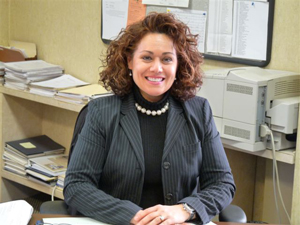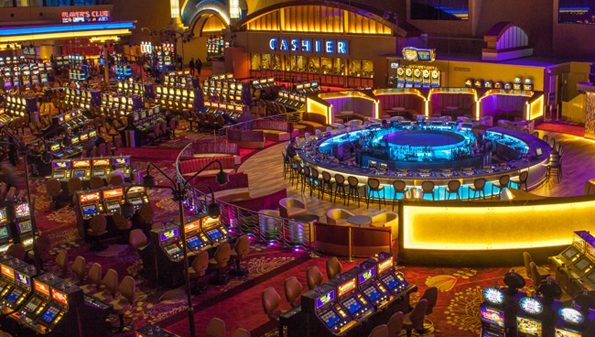 |
| A report by City Controller Maria Brown sent to the mayor and the council reveals casino revenue dropped by $1.4 million last year and may
drop more. |
|
|
|
|
|
Just two weeks ago (Sept. 16 editions) the Niagara Falls Reporter warned that increased gaming competition in the Northeast did not bode well for the Seneca Niagara Casino, nor for the future of maintaining payment levels to the city based on the local share of slot machine revenue from the casino..
Last week, the Reporter obtained a spreadsheet report accompanied by a letter from Niagara Falls City Controller Maria Brown, sent to Mayor Paul Dyster and the five members of the council that has confirmed the worst.
"The Casino Local Share to the City of Niagara Falls dropped $1.4 million from 2012 (year earned) to 2013 (year earned)," Brown wrote. "The total amount in 2012 was $21.6 million and the total amount in 2013 was $20.3 million. I want you all to be aware of this."
 |
| Mayor Paul Dyster, faced wih declining casino cash revenues, still elected to use $5.5 million annually to give to the state-despite the fact that the state gets 75 percent of the Seneca casino cash and Niagara Falls gets only 25 percent. |
|
|
|
|
|
Furthermore, projections based on first quarter earnings at the casino show that revenue might drop as low as $19 million in 2014.
"The 1st quarter Casino Local Share revenue payment of 2014 (year earned) for the 2015 Spending Plan has also dropped in comparison to the 2013 1st quarter Casino Local Share received for the 2014 Spending Plan," Brown added.
Even if current payment levels are roughly maintained – and there is no reason to think they will be – the city is spending the casino revenue faster than it can be taken in, Brown said.
"With the start of the 2015 Casino Capital Spending Plan through 2018 Casino Capital Spending Plan, if the City continues to receive around $20 million per year in total Casino Local Share of slot revenue and the same recurring Capital projects are requested, the City will be short approx. $3 million dollars," she wrote. "You may have to eliminate some of these recurring Capital projects. We will have to wait and see how much the revenue will be year by year."
Brown's findings back up recent statements by New York State Comptroller Thomas DiNapoli, who warned of the state's increasing reliance on casino cash in order to make ends meet. Perhaps no municipality in New York is as reliant on those funds as Niagara Falls.
"Now with a new expansion underway, more casinos will mean more gaming revenue and new jobs, but the long-term impact for the state remains unclear," DiNapoli said in a statement. "It will inevitably create both winners and losers in the years ahead."
DiNapoli said that he welcomed new revenues and jobs and that he had no opinion as to whether casinos were a good or bad idea. "We just want people to have realistic expectations as to what may, or may not, come from this," he said.
In a 2013 audit report, DiNapoli singled out Niagara Falls for its poor handling of casino funding, noting that the council and the Dyster administration included the casino money in budgets between 2008 and 2013 despite the fact that a dispute between the Senecas and the state meant no actual revenue was coming in.
Since the Seneca Niagara Casino opened on New Year's Eve, 2002, the gaming industry as it pertains to Western New York has undergone significant changes. No fewer than 17 new casinos have been proposed, are opening or have already opened in the Northeast – Midwest region that Seneca Niagara once viewed as its own private bailiwick.
One hundred miles to the south, in a city that used to send busloads of gamblers to the Seneca Niagara Casino, Presque Island Downs and Casino has opened in Erie, Pa., providing a gaming venue for thousand who, in the early days, were bused mornings and afternoons from that Lake Erie city to the Seneca Niagara Casino. But now, with a full racetrack, 2,000 slot machines and green table games, it keeps many away from Niagara Falls.
Another nearby city that used to send gamblers to Seneca Niagara in great numbers was Cleveland, a little more than two hours away. But not so much anymore since the Horseshoe Cleveland, with 1,600 slots and 89 green tables opened in May of 2012. The long bus rides along the bleak, snow-covered Lake Erie shoreline are largely a thing of the past as the Cleveland locals enjoy fun and games in their own backyard.
Gov. Andrew Cuomo has proposed five new casinos in New York State alone, and as many as 20 proposals have been received. Casinos in Rochester, the Finger Lakes and Albany would further reduce Niagara Falls casino revenue.
"Clearly New York is getting into the market late," said Richard McGowan, a Boston College economics professor who studies casino gambling. "So the primary thing they are doing is trying to reclaim revenue from other states."
This newspaper and now the city controller are voices in the wilderness, cautioning the administration and the city council against squandering casino cash.
There is empirical evidence that the levels of funding the city once enjoyed are unsustainable.
 |
| The revenue from slot machines at Seneca Niagara is falling. |
|
|
|
|
|
|


